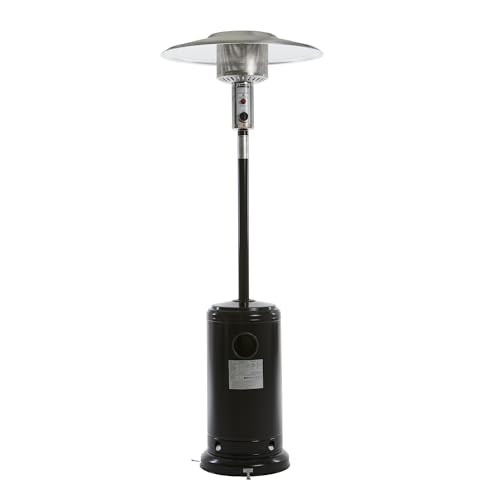The Essential Guide to Buying Patio Heating: Everything You Need to Know
As the weather turns cooler, lots of homeowners start to consider how to extend their outdoor home into the cold months. Patio heating permits relaxing events under the stars, improving year-round usability of patio areas, decks, and gardens. This short article will offer a comprehensive introduction of patio heating options, factors to think about when purchasing, and responses to regularly asked questions.
Types of Patio Heaters
Patio heaters can be found in various designs and performances, each catering to different user needs. Here's a breakdown of the most popular options:
1. Propane Patio Heaters
- Description: These portable heaters run on propane gas cylinders.
- Advantages:
- Easy to move and establish.
- Offers instant heat.
- Ideal for larger outdoor areas.
- Considerations:
- Requires routine refilling of propane tanks.
- May be limited by regional policies on outdoor gas appliances.
2. Gas Patio Heaters
- Description: Connected directly to a natural gas line.
- Advantages:
- No need for refilling; a constant supply of hot gas.
- Cost-effective in the long term for regular usage.
- Considerations:
- Requires expert installation.
- Less portable than propane heaters.
3. Electric Patio Heaters
- Description: Heaters powered by electricity.
- Benefits:
- Easy to install and utilize; simply plug them in.
- Ideal for small gatherings and limited outdoor spaces.
- Factors to consider:
- Less effective than gas heaters; may not warm big locations successfully.
- Requires access to electric outlets.
4. Infrared Heaters
- Description: Heaters that utilize infrared innovation to warm things and people directly instead of heating the surrounding air.
- Advantages:
- Highly energy-efficient and ecologically friendly.
- Instantaneous heat without waiting.
- Considerations:
- Effectiveness can be limited by wind.
- Usually more pricey than standard heaters.
5. Fire Pits and Tabletop Fireplaces
- Description: Open flame systems that can likewise function as stylish outdoor decoration.
- Advantages:
- Multifunctional; supplies heat and ambiance.
- Factors to consider:
- Requires consistent guidance and maintenance.
- Less efficient heat distribution compared to other heaters.
Factors to Consider When Buying Patio Heaters
Purchasing patio heating needs careful factor to consider to guarantee you acquire an unit that fulfills your specific requirements. Below are key factors to evaluate:
- Size of the Area:
The main consideration is the size of the outdoor space you wish to heat. Bigger patio areas might require more effective heaters or numerous units to disperse heat effectively. - Heating Capacity:
This is measured in BTUs (British Thermal Units). Typically, higher BTU rankings indicate a heater that can generate more heat. - Mobility and Placement:
Determine whether you choose a portable solution or a fixed installation. Believe about where you prepare to place the heater, and how typically you may need to move it. - Fuel Source:
Evaluate your preference for propane, natural gas, or electric designs based on schedule and convenience. Each fuel type has associated costs and factors to consider. - Security Features:
Opt for models equipped with safety features such as tip-over protection and automated shut-off. This is essential when utilizing heaters in outdoor spaces. - Style and Aesthetics:
Choosing an aesthetically attractive heater can boost your outdoor environment. Look for options that match your existing furniture and decor. - Weather condition Resistance:
If the heater will stay outdoors all year, think about designs designed to hold up against various weather components such as rain or snow.
Comparison Table of Patio Heaters
| Type | Heat Source | Portability | Cost Range | Pros | Cons |
|---|---|---|---|---|---|
| Propane Patio Heaters | Propane Gas | High | ₤ 100-₤ 400 | Instantaneous heat, portable | Requirements filling up, local guidelines |
| Gas Heaters | Natural Gas | Low | ₤ 300-₤ 700 | Constant supply, economical | Requires setup |
| Electric Patio Heaters | Electrical energy | High | ₤ 50-₤ 300 | Easy to utilize, no fuel needed | Restricted variety and heat |
| Infrared Heaters | Electrical power | Medium | ₤ 150-₤ 500 | Efficient, immediate heat | Wind effects, higher cost |
| Fire Pits/ Fireplaces | Wood/Gas | Variable | ₤ 100-₤ 600 | Ornamental, multifunctional | Requires guidance, upkeep |
FAQs About Patio Heating
1. How numerous BTUs do I need for my patio?
The variety of BTUs needed depends upon the size of your patio. A basic guideline is:
- Up to 20 sq ft: 10,000 BTUs
- 20-50 sq ft: 20,000 BTUs
- 50-100 sq ft: 30,000 BTUs
2. Are patio heaters safe to use?
Yes, as long as security standards are followed. Look for heaters with safety features and ensure they are operated in well-ventilated areas.
3. Can electric patio heaters be used inside?
It is not suggested to use outdoor heaters inside due to the danger of fire and carbon monoxide gas buildup. Always confirm producer guidelines.
4. What is the average cost to run a patio heater?
Running expenses differ extensively based on the type of fuel and energy rates in your area. For electric units, average use might cost around ₤ 0.07-₤ 0.30 per hour.
5. How do I preserve my patio heater?
Regular maintenance includes cleaning up out any debris, examining gas connections for leaks, and ensuring that electrical parts are safe and working.
Buying patio heating is an exceptional way to extend the pleasure of outdoor areas well into the cooler months. With Outdoor Space Heaters offered, potential purchasers should examine their distinct requirements, space dimensions, and chosen heating approaches. By considering the factors and comparisons provided in this post, homeowners can make a knowledgeable decision and guarantee their patio stays a comfortable social center throughout the year.

